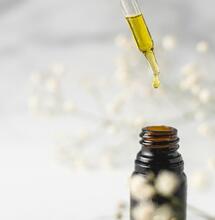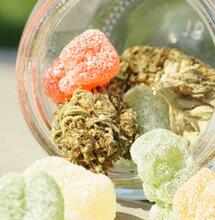The Importance of Terpenes and Flavonoids

You will no doubt already know about the concepts of THC and CBD. However, the magic of cannabis doesn't lie in cannabinoids alone. The secret synergy between terpenes and flavonoids helps define the aroma, flavour, colour, and, most importantly, the final effect of your buds.
What Are Terpenes?
Imagine opening a jar of Orange Bud and being hit by a wave of citrus, or the pine and forest aroma of a Jack Herer. That, my friend, is the work of terpenes. They are the volatile aromatic molecules produced by plants, not just cannabis. They are, in essence, the personality and soul of each strain.
But their function goes far beyond a simple perfume. Science has proven that terpenes have their therapeutic properties and, crucially, modulate the effects of cannabinoids.
The Terpenes You Should Know
Myrcene: Earthy and musky aroma (mango, thyme). Known for its sedative and relaxing effects.
Limonene: Intense citrus aroma (lemons, oranges). Associated with mood enhancement, stress relief, and antidepressant properties.
Linalool: Floral and spicy aroma (lavender). Famous for its calming, anxiolytic, and analgesic effects. Ideal for combating anxiety.
Pinene: Fresh pine aroma. Aids concentration and acts as a bronchodilator (opens the airways).
What Are Flavonoids?
If terpenes are aroma, flavonoids are visual art. These molecules are responsible for pigmentation in many plants, from the blue of blueberries to the violet and purple hues we love so much in some cannabis strains like Purple.
But again, their function is much more than aesthetic. They are powerful antioxidants and anti-inflammatories that contribute significantly to the plant's therapeutic profile. In cannabis, there are unique flavonoids known as cannaflavins (Cannaflavin A and B), which have been shown to have anti-inflammatory properties.
Key Flavonoids in Cannabis
Quercetin: A potent antioxidant and antiviral found in many fruits and vegetables.
Cannaflavins A, B, and C: Unique to cannabis, with enormous anti-inflammatory potential.
Apigenin: Found in chamomile, it provides anxiolytic and relaxing effects.
The Entourage Effect
This is where it all makes sense. The relationship between terpenes and flavonoids, along with cannabinoids, gives rise to the phenomenon known as the "entourage effect."
Think of a symphony orchestra. THC could be the lead violin, powerful and starring. CBD would be the cello, providing depth and balance. But it's the terpenes (the wind instruments) and the flavonoids (the percussion) that complete the symphony, creating a rich, nuanced, and far more powerful experience than either instrument alone.
In theory, this means:
The combination of CBD, myrcene, and quercetin can create a superior anti-inflammatory and analgesic effect.
A strain rich in limonene will not only smell citrusy but will likely provide you with a more energizing and positive effect.
How to Take Advantage of This Synergy
Trust Your Nose: Aroma is your best guide. If a strain smells good to you, its terpene profile is likely what your body needs. A citrus scent will energize you, while an earthy or floral one will relax you.
Research the Strain: Before purchasing seeds or flowers, research their genetic profile. Seed banks and websites often offer information on dominant terpenes.
Vaporize, Don't Burn: Combustion destroys many of these volatile compounds. Vaporizing at lower temperatures (between 160-180°C) preserves the terpenes and flavonoids, allowing you to enjoy a purer flavour and a fuller effect.
More From Soft Secrets:
Cannabis Terpenes May Increase Your High









